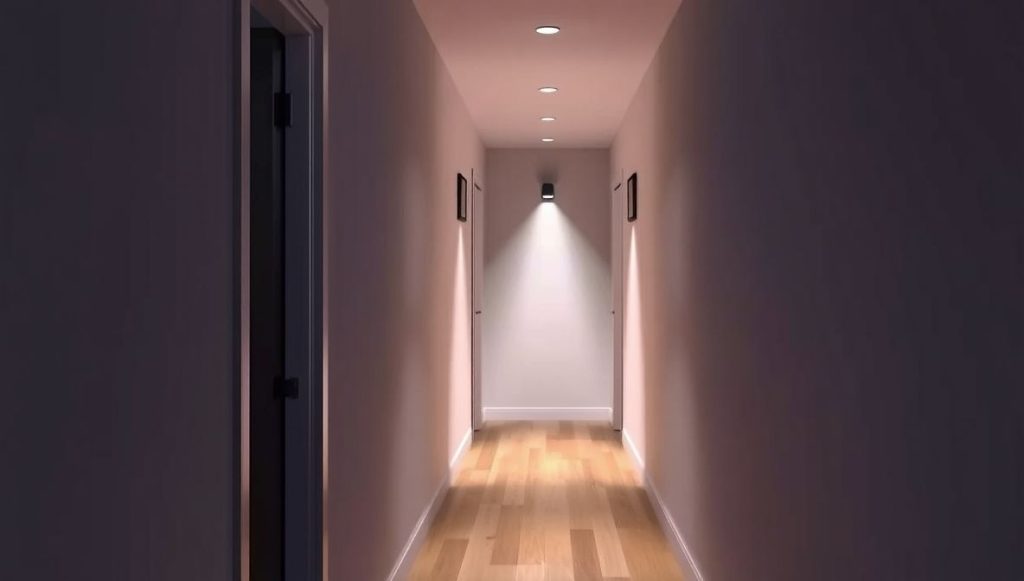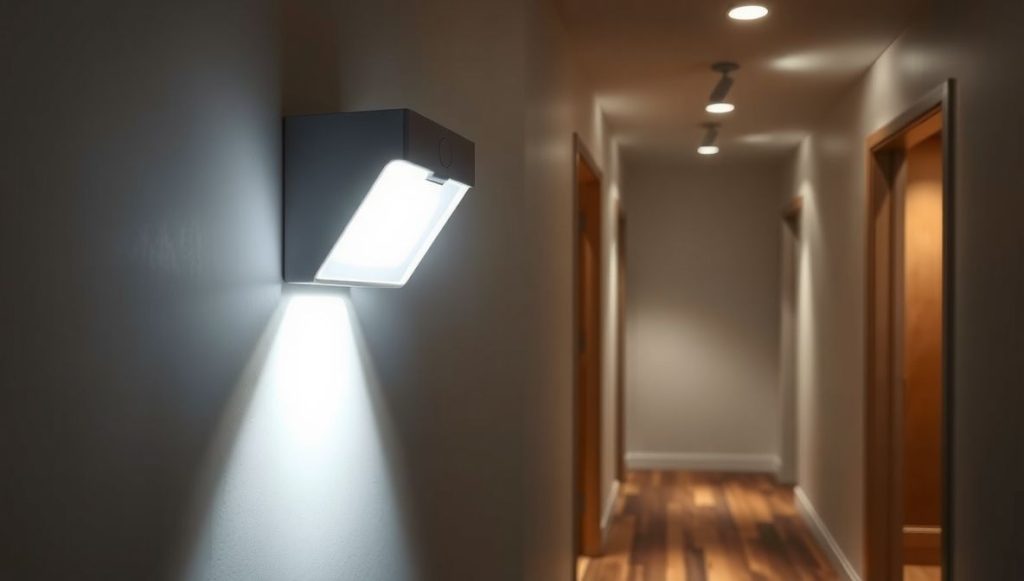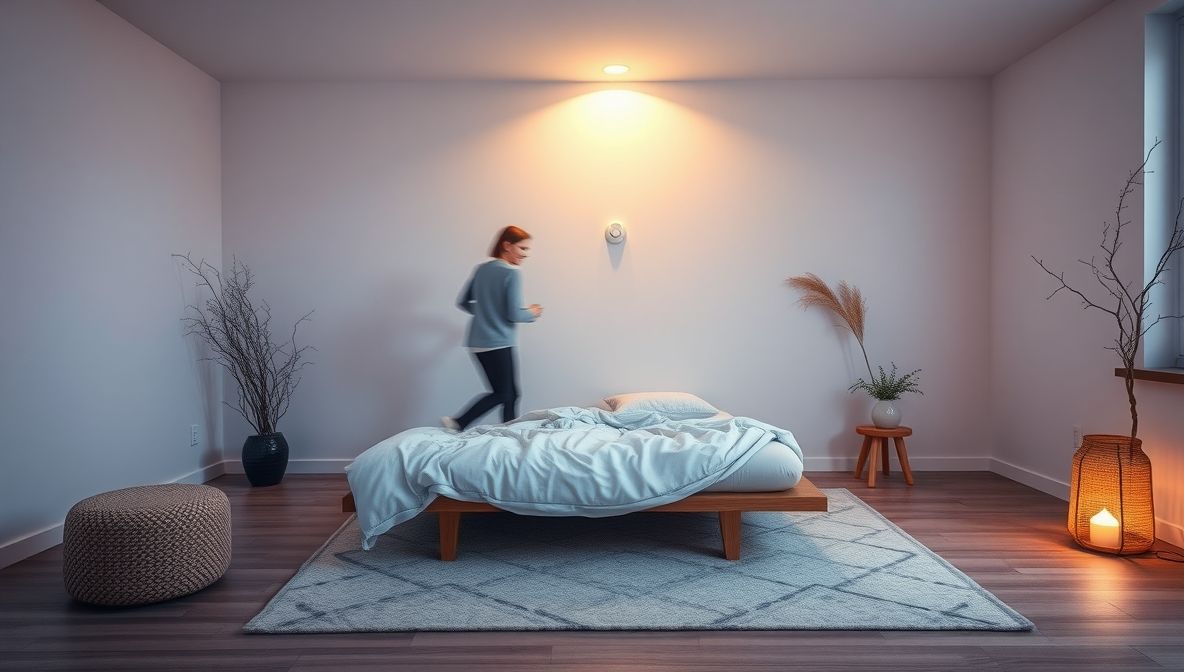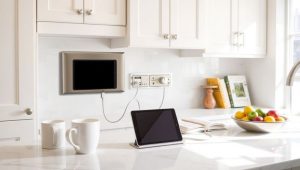Looking to upgrade your home lighting while saving energy and boosting security? A motion sensor light is the smart solution you need.
Whether it’s brightening up your hallway, deterring intruders outside, or simply automating your bathroom lighting, motion-activated lights are practical, affordable, and stylish. In this complete guide, we’ll explore the different types of motion sensor lights — including bulbs, switches, and outdoor floodlights — and help you choose the right option for your home.
From product reviews to installation tips, we’ve got everything covered. Whether you’re building a smart home setup or just want lights that turn on when you walk in, this guide is your starting point. Let’s dive into the world of motion-sensing convenience!
What Is a Motion Sensor Light and How Does It Work?

A motion sensor light is a lighting device that automatically turns on when it detects movement within a certain range.
Using technologies like Passive Infrared (PIR) or ultrasonic sensors, these lights detect body heat or motion and trigger illumination — no switch needed. Once no movement is detected, they automatically switch off after a set time.
This smart functionality makes them ideal for bathrooms, hallways, staircases, and outdoor areas like porches and driveways. Motion sensor lights not only offer convenience but also help reduce electricity bills by eliminating wasted lighting.
They’re also a first line of defense for home security, instantly lighting up when someone approaches. Whether battery-operated, solar-powered, or wired, motion lights combine safety, savings, and smart tech in one.
Types of Motion Sensor Lights

When choosing a motion sensor light, it helps to understand the different types available — each suited for specific needs. Motion sensor light bulbs screw directly into standard sockets and are perfect for closets, bathrooms, or hallways.
They’re easy to install and require no extra wiring. Motion sensor light switches, on the other hand, replace your existing wall switches, turning any connected light into a smart, motion-activated system — ideal for bedrooms, offices, or staircases.
For outdoor use, motion sensor floodlights or wall-mounted fixtures are popular. They help secure entrances, driveways, or gardens and often come solar-powered for energy efficiency. Choosing the right type depends on your setup, lighting needs, and whether you prefer plug-and-play or wired solutions.
Benefits of Using Motion Sensor Lights

Motion sensor lights offer a range of benefits that make them a must-have for modern homes. First, they improve energy efficiency by only turning on when needed — no more accidentally leaving lights on all night.
Second, they boost home security, especially outdoors, by startling potential intruders with sudden illumination. Indoors, they’re perfect for areas like bathrooms or staircases where you need hands-free lighting.
They’re also a great solution for families with kids or elderly loved ones who may forget to flip switches. Additionally, these lights are available in smart home-compatible models, allowing you to control settings via apps or voice assistants.
Whether you’re going green or upgrading for safety, motion sensor lighting is a smart, affordable investment.
Where to Install Motion Sensor Lights (Pro Tips)
Choosing the right locations for your motion sensor lights ensures maximum efficiency, safety, and convenience. Whether indoors or outdoors, these strategic spots deliver the best results:
Best Places to Install Motion Sensor Lights
- Front Porch & Entryways – Instantly light up as you approach your door for safety and visibility.
- Driveways & Garages – Ideal for night-time arrivals or deterring unwanted guests.
- Hallways & Staircases – No need to fumble for switches in the dark.
- Bathrooms & Closets – Automatic on/off for high-use areas.
- Garden Paths & Yards – Light the way with solar-powered outdoor options.
Pro Tip: Position lights 6-10 feet above ground and ensure they face the general direction of movement for optimal detection.
How to Choose the Right Motion Sensor Light

With so many styles and features available, here’s how to pick the best motion sensor light for your specific needs:
Key Factors to Consider
- Detection Range – Choose between short-range (6–10 ft) for indoor spaces and long-range (up to 70 ft) for outdoor security.
- Brightness (Lumens) –
- Indoor use: 300–800 lumens
- Outdoor use: 1000+ lumens for better visibility
- Power Source –
- Battery-powered – Quick setup, ideal for indoors
- Solar-powered – Eco-friendly and perfect for outdoor use
- Hardwired – Reliable but may require professional installation
- Weatherproof Rating – For outdoor lights, look for IP65 or higher to handle rain and dust.
- Adjustability – Get lights with adjustable timers, sensitivity levels, and motion direction.
Bonus Tip: For smart homes, select a Wi-Fi or app-enabled motion sensor light that integrates with Alexa, Google Home, or Apple HomeKit.
Read also: Vacuum Storage Bags: The Ultimate Space-Saving Solution for Your Home
DIY Installation Tips for MotioInstalling a motion sensor light can be easy — especially if you choose plug-and-play models. Here are some quick tips to guide your DIY installation:
Indoor Installation Tips
- Bulbs: Simply screw into existing sockets like any normal bulb.
- Switches: Turn off power at the breaker before removing the old switch. Follow manufacturer wiring instructions or hire an electrician if unsure.
Outdoor Installation Tips
- Use weatherproof boxes and fittings.
- Mount the light at 6-10 feet high, facing the detection area.
- If solar-powered, place in areas with direct sunlight exposure for at least 6 hours a day.
Tools You Might Need:
- Screwdriver
- Voltage tester
- Ladder
- Drill (for wall-mounted units)
Pro Tip: Always read the user manual. If electrical work is required and you’re unsure, hire a licensed electrician for safety.n Sensor Lights
Common FAQs About Motion Sensor Lights
Still have questions? You’re not alone. Below are answers to the most frequently asked questions about motion sensor lights to help you make informed decisions:
Can motion sensor lights be used both indoors and outdoors?
Yes. There are models specifically designed for indoor use (closets, bathrooms) and outdoor use (porches, driveways). Outdoor models should be weatherproof (look for IP ratings).
Do motion sensor light bulbs work in any fixture?
Most motion sensor bulbs fit into standard E26 sockets and work in open fixtures. Avoid fully enclosed fixtures unless the bulb is rated for it.
How do I prevent false triggers from pets or passing cars?
Choose lights with adjustable sensitivity settings or pet-immunity features, and aim the sensors away from roads or ground level if possible.
Are they compatible with smart home systems?
Yes, many modern motion sensor lights support Alexa, Google Assistant, or smartphone apps for remote control and automation.
Do motion lights save energy?
Absolutely. They only turn on when needed, reducing wasted electricity and helping to lower energy bills.
Final Thoughts
Motion sensor lights are one of the easiest ways to upgrade your home’s lighting, security, and energy efficiency in a single step. Whether you need a simple bulb for your hallway, a light switch for your bathroom, or a solar-powered floodlight for your front yard, there’s a perfect option for every budget and space.
From saving electricity to deterring intruders, the benefits are practical and immediate — and the setup is often DIY-friendly. Now that you understand the types, features, and best installation spots, it’s time to take action.
🔦 Ready to enhance your space?
Explore our recommended motion sensor lights above and find the perfect fit for your home. Your smarter, safer lighting upgrade starts now!




